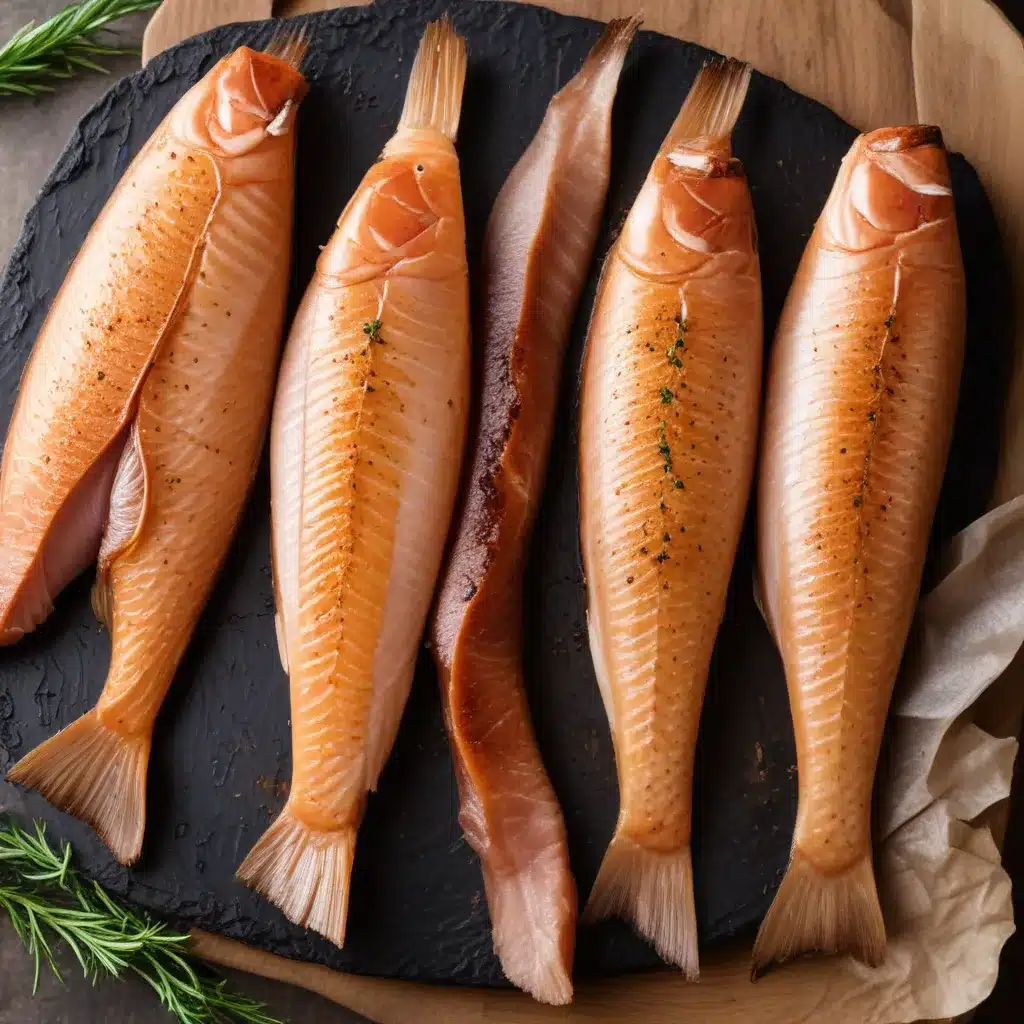
Bringing the Magic of Smoked Fish to Your Backyard
As an experienced barbecue pitmaster, I’ve had the pleasure of experimenting with a wide variety of proteins and techniques over the years. While the classic smoked meats like brisket, ribs, and pulled pork often steal the limelight, I’ve found that smoked fish can be a true revelation for the adventurous home cook.
The delicate yet robust flavors of smoked salmon, trout, or even whitefish can elevate any barbecue spread, adding a touch of sophistication and complexity that your guests are sure to appreciate. In this article, I’ll share my personal insights and techniques for mastering the art of smoked fish, so you can bring that same level of culinary magic to your own backyard.
The Power of the Smoke: Unlocking Flavor Profiles
One of the key advantages of smoked fish is the way the smoke interacts with the natural oils and proteins in the fish. By carefully controlling the type of wood, temperature, and smoking time, you can coax out a symphony of flavors that simply can’t be achieved through other cooking methods.
For instance, I’ve found that pairing a mild white fish like halibut with a fruity apple or cherry wood can create a delightfully sweet and subtle smokiness. On the other hand, a bold and oily fish like salmon pairs beautifully with a more robust wood like oak or hickory, which can impart deeper, almost nutty notes.
The key is to experiment and find the perfect balance for your own taste preferences. Don’t be afraid to try different wood blends or even get creative with infusing your own custom rubs or marinades. The possibilities are truly endless when it comes to unlocking the full potential of smoked fish.
Mastering the Technique: Temperature, Time, and Texture
Of course, achieving that perfect smoked fish isn’t just about the flavor profiles – the texture and doneness are equally important. As a seasoned pitmaster, I’ve learned that the secret lies in precise temperature control and a keen eye for timing.
When it comes to temperature, I generally aim for a range of 225-250°F in my smoker. This slow-and-low approach helps to gently cook the fish, allowing the smoke to penetrate deeply without drying out the delicate flesh. I also find that using a digital thermometer is crucial for ensuring the fish reaches the optimal internal temperature, usually around 145°F for most species.
As for timing, the duration of the smoke can vary depending on the thickness of the fish fillets or steaks. I typically recommend starting with a 2-3 hour smoke, then checking the texture and adjusting the time accordingly. The fish should flake easily with a fork but still maintain a moist, tender bite. Oversmoked fish can quickly turn dry and stringy, so it’s all about finding that perfect sweet spot.
Flavoring the Feast: Rubs, Marinades, and Glazes
While the smoke is the true star of the show when it comes to smoked fish, I’ve found that a well-chosen rub, marinade, or glaze can take the experience to the next level. These additional layers of flavor can not only complement the natural taste of the fish but also help to balance out the intensity of the smoke.
For example, a simple brown sugar and paprika rub can add a delightful caramelized crust to the fish, while a citrus-based marinade can lend a refreshing acidity to offset the richness of the smoke. And don’t forget the power of a flavorful glaze – a sweet and sticky maple or honey glaze can turn an ordinary smoked trout into a true showstopper.
The key is to experiment and find the right combination of flavors that both enhance the fish and complement the smoke. Don’t be afraid to get creative with your spice blends or try unconventional ingredient pairings. After all, the beauty of being a home pitmaster is the freedom to let your culinary imagination run wild.
Bringing It All Together: Serving and Pairing
Once you’ve mastered the art of smoked fish, the final step is to present your creation in a way that truly showcases its flavor and texture. I like to keep things simple, often serving my smoked fish on a rustic wood board or platter, accompanied by an array of complementary garnishes and sides.
A classic pairing for smoked salmon, for instance, might include a dollop of creamy horseradish sauce, fresh dill, and crisp cucumber slices. For a heartier option, you could serve the smoked fish atop a bed of mixed greens with a tangy vinaigrette or alongside a selection of crackers or crostini.
And don’t forget the importance of choosing the right beverage to round out the meal. A crisp white wine or a cold, hoppy craft beer can be the perfect foil to the smoky, umami-rich flavors of the fish. Personally, I’m a big fan of pairing my smoked trout with a bright and citrusy IPA – the interplay of flavors is simply divine.
Elevating the Backyard Experience
As a passionate barbecue pitmaster, I believe that smoked fish can be a game-changer for the home cook looking to take their backyard grilling to new heights. By mastering the art of smoke, flavor, and texture, you can create dishes that not only delight the senses but also impress your family and friends.
So why not step out of your comfort zone and give smoked fish a try? Whether you’re hosting a summer cookout or simply craving a healthy and delicious meal, the techniques and insights I’ve shared here can help you unlock a whole new world of barbecue magic. Who knows – you might just discover your new signature dish in the process.
And remember, the beauty of being a home pitmaster is the freedom to experiment and have fun. So don’t be afraid to get creative, try new flavor combinations, and most importantly, savor every delicious bite. After all, that’s what backyard barbecuing is all about.

